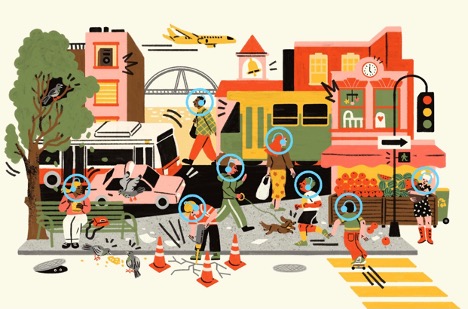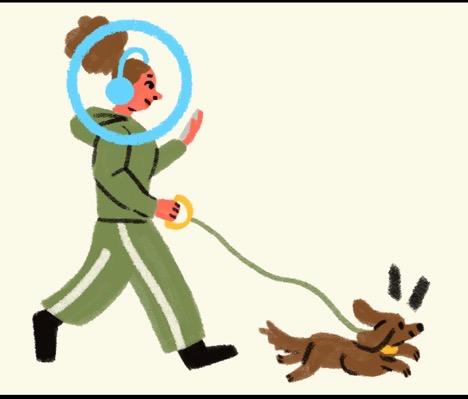(THE COST OF CANCELLING OUT THE NOISE OF THE WORLD)
August 30, 2023
Hello everyone.
They are everywhere you look. People are wearing them. I’m not talking about the latest sneakers or the ubiquitous wristbands, I’m talking about headphones or earbuds. On public transport – trains, buses, planes, and even on scooters and bicycles, this piece of equipment is attached to the human ear. And even people just going about their daily lives in shopping centres, at the grocer, at the gym, or on a jog in the park, you can see these devices firmly nestled in the ear or over the ear, so the noise of the world is stopped, like it has become an offensive intrusion in our lives.

Where once the sounds of the world were considered benign and/or an unavoidable distraction, big business has now wrapped up noise and marketed it as a hazard to our health. I know excessive and prolonged noise is not healthy. What I am saying is that silence is now big business. Globally, the noise-canceling headphones market generated $13.1bn in 2021, a figure that is expected to more than triple to $45.4 bn by 2031, according to Allied Market Research data.
In Australia, Google searches for “noise-cancelling” and "earplugs” have steadily risen in Australia in the last five years. Earplug brands are now targeting parents by suggesting that their device will help prevent “burnout” while caring for children.
Are they helpful, and what are the costs of long-term use?
The technology that cancels out noise was first developed in the 1950s to reduce cockpit noise for pilots. Bose released the first commercially available headset in 1989, and this was also marketed for aviation. The headphones use a technology known as active noise control: a microphone picks up ambient sounds and an amplifier produces sound waves that are exactly out of phase. The result, when the opposite sound waves collide, is a canceling out of noise. They appear to work best for low-frequency sounds less than 1kHz, such as the roar of an airplane engine, the drone of road traffic, or the hum of an air conditioning unit.
We all know that too much noise is harmful to hearing, but it is also harmful to our broader physical health. Long-term pollution has been linked to increased risk of cardiovascular disease, including heart attack deaths and depressive symptoms. Strict guidelines stipulate that workers should not be exposed to more than the average of 85dB of noise – think of the noise of a blender – over eight hours.
Of course, there are certain settings where earplugs are necessary to prevent hearing loss, such as on building sites, in the military, at concerts, or in very loud work environments.
But in a recreational use setting, headphones can contribute to hearing loss when listening volumes are too high. As yet, we don’t have any regulations about the use of headphones or earbuds around recreational noise. Without us even realizing it, we may be damaging the neurons that attach to the sensory cells in the ear. These nerves that transmit information about listening in noise are the first to be damaged …. And research shows that a clinical audiogram may not detect this.

Many studies have shown that constant earplug wearing can result in new-onset tinnitus. It was found in one experiment that the tinnitus people developed was felt as “high-pitched”, which corresponded to the range the earplugs were blocking. Professor David McAlpine, academic director of Macquarie University Hearing in Australia argues that if you “stop putting sound into your ears… your brain overcompensates by turning up its internal gain.” Furthermore, McAlpine comments that “it completely alters your neural pathways.” So McAlpine sets us straight by saying that “monkeying around with the sound energy going into your ears is monkeying around with what your brain evolved to be doing.”

Workplaces are often noisy environments and pose a distraction to many employees. The pandemic forced many of us to work from home, and we came to realize how much noise we had been putting up with. But simply wearing noise-cancelling headphones at work should not be the broad solution to work noise. The design of the workplace needs to be addressed to incorporate areas where focused work can be done in quiet zones, while collaborative work can be done in other zones. We do have the “quiet carriage” on trains, so why not in offices and workplaces?
Much more research needs to be done in this area, but it seems to me that when we start to interfere with nature and how the human body is meant to work, negative consequences can manifest. Whether or not these devices do us harm, big business will still market them as a way to deal with the noise in our modern world and profit from it.
Cheers,
Jacquie

